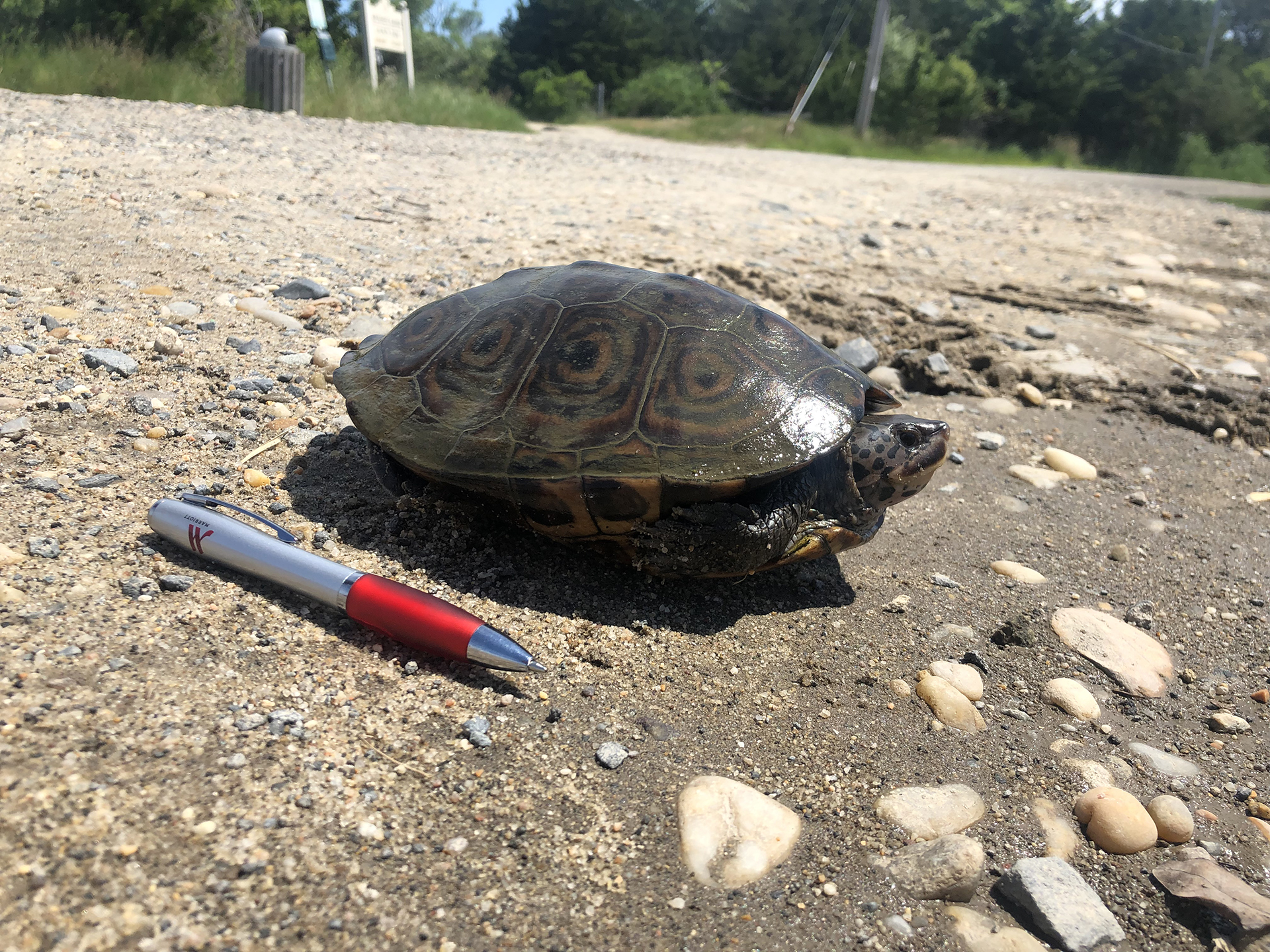A Diamond In The Rough

When people think about turtles, they typically think of sea turtles, with their long, paddle-like arms, or maybe a turtle that we often encounter in our backyards, the brightly colored yellow box turtle. We have another, very unique turtle that most people never see: the diamondback terrapin. This turtle is the only turtle in the world that lives exclusively in brackish water.
The diamondback terrapin is one of the most beautiful turtles. They are commonly kept as pets because of their unique colors and patterns. There was a time where you could see dozens during a paddle in local estuaries and creeks. Now, you’d be lucky to see even one.
Not too much is known about the populations this far east. There is a large group in Jamaica Bay, near Queens, that one time even caused flight delays at John F. Kennedy International Airport because so many turtles mysteriously came out onto the runway. Early in June, mature females come out of the water to look for suitable nesting areas. They look for somewhere sandy, and up above the highest tide, so that their nests don’t get washed away.
This summer I spent my time monitoring Northwest Harbor in East Hampton for terrapins and evidence of their presence. The sandy dunes there make an excellent home. During this nesting period, if you walk down the beach and look carefully, you may spot them, but can definitely catch their tracks heading up into the dunes. They leave very distinct swooping prints, with a flat spot where the shell drags between them. At Northwest Harbor, they like to use the sandy paths that were made for people to get around the preserve. Markings were even found going straight up a very steep hill on the north side of the peninsula.
Once they lay eggs, they’re hard to spot. What you’re more likely to see is a predated nest. Ripped up egg shells – up to about 20 per nest — as well as dug-out holes from predators. This summer, I found 98 of these nests with more than 800 eaten eggs, most likely by raccoons or foxes. The lucky three percent of nests that survive usually hatch late in the summer, in August or September. Those laid in nests later in the season will emerge next spring.
Once hatched, it’s a bit of a mystery what these tiny turtles do. At first, it was thought they head straight for the water. But when scientists tried releasing new hatchlings there, found the turtles running back toward the dune. Many are observed staying in the wrack line — where debris is left on the beach by high tide — or higher up for up to a few years until they are ready to begin their fully-aquatic lives. These hatchlings will face many threats, and few will make it to breeding age.
In the 18th and 19th centuries, diamondback terrapins were almost hunted to extinction; their meat was considered a delicacy. While they have rebounded from that, they still suffer from increased coastal development, injuries from boat propellers, and getting stuck in commercial crab traps. According to the International Union for Conservation of Nature’s Red List, diamondback terrapins are considered vulnerable, one level before endangered, and are on the decline.
While many states have strict protection, and have diamondback terrapins marked as endangered, or threatened, New York has taken much longer to act. Just last year, the state made it illegal for the species to be commercially harvested.
Next time you visit one of our estuaries, keep an eye out for these elusive turtles. Their presence is an indication of a healthy salt marsh, and it is vital to these turtles’ existence that we keep our waters as clean as possible.
Paul King III is an environmental educator at the South Fork Natural History Museum & Nature Center. He graduated from Temple University with a B.S. in Environmental Sciences.



